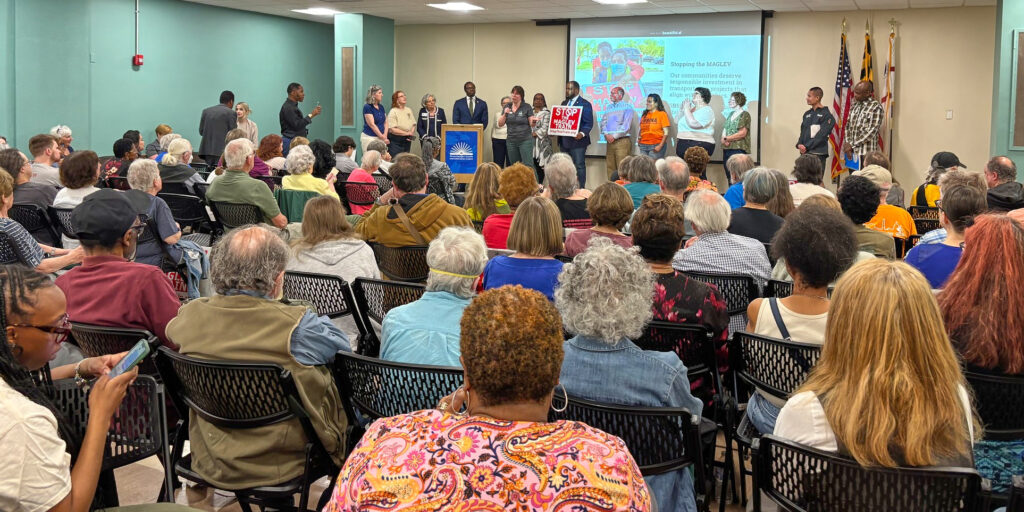This past week saw more of our older population starting and completing their vaccinations and burgeoning growth in the number of shots available – especially as the one-shot Johnson & Johnson vaccine joins the mix. In the race to vaccinate, Prince George’s County remains in the back of the pack but has in the last 10 or so days almost doubled its previous score to achieve 12 percent or more vaccinated by population (though several counties have managed more than double that). The most comparable counties in terms of suburban/rural mix, Montgomery and Baltimore, both have rates that look likely to surpass 20 percent by the coming weekend.
One curious aspect of the county’s position is that, though they seem to have received their proportional share of the vaccine, they haven’t vaccinated a comparable fraction of their population. County Executive Angela Alsobrooks, in her last email report on Friday, March 5, claims that they could have vaccinated more people if they had more shots.
Numbers Game
According to the state’s data website, for weeks 9 through 11 of vaccine distribution, Montgomery, Baltimore and Prince George’s counties each received enough vaccine for 3.3, 2.5 and 3.4 percent of their respective populations – yet Prince George’s, which received the highest percentage of material, also has the lowest percentage vaccinated.
One possible factor is how the shots were distributed. A presentation describing how many shots each county has received of its share of state supplies and how they were handled can be found online. The link to it is a little hard to find. Go to coronavirus.maryland.gov/#Vaccine and select Vaccine Data from the top task bar. Go to the graph called Vaccines by Date, and click on the right arrowhead just under that graph. That gives shots by county and in the top right corner of the panel is “Geographic Vaccine Allocation by County Weeks 9 to 11.” The graphs for each county do not include vaccines distributed to state-wide mass sites (e.g., Six Flags). Weeks 9 to 11 is not defined but presumably refers to late January or February.
No Consistent Pattern
Counties have elected to distribute their vaccines in very different ways and the Prince George’s picture does not look like any of the others. Counties vary widely in the percentage given to local health authorities (from 26 percent to 78 percent) but in general, the largest recipients in a county are health departments and hospitals – with retail pharmacies trailing and “Federally Qualified Health Care and Large Provider Practices” picking up a percent or two.
Prince George’s allocation is spread among the health department, retail pharmacies, hospitals and “large providers” much more evenly than in any other county, as shown in the pie chart, whereas Montgomery is more typical. A substantial fraction of Prince George’s allocation (about 17 percent) over the three-week period went to Kaiser Permanente in Largo (5,000 doses), with 3,000 each to Giant and Safeway, 8,230 to hospitals and 11,500 (38 percent) to the Health Department. Among hospitals receiving doses, nearby Doctors Hospital received 2,200 doses, Adventist scored 900 (it has a new facility in Largo), MedStar got 800 and the University of Maryland Capital Region Hub received 4,330 (includes Prince George’s Hospital Center in Cheverly and facilities in Laurel and Bowie).
In contrast, Montgomery County’s doses (higher in total number in proportion to their larger population) went to hospitals (50 percent), pharmacies (9 percent), the health department (37 percent) and only 2 percent went to the large provider category with 700 out of 900 such doses going to the Kaiser center in Gaithersburg. Kaiser also received 8 percent of Baltimore County’s total doses for its facility there – all the large provider action. Non-Kaiser large providers otherwise were allocated less than 3 percent of available doses in the handful of other counties where they figured in the graphs at all.
Why Kaiser
Kaiser is a nonprofit that provides highly integrated care for its members, but also has a long history of collaboration with local jurisdictions – for example, Kaiser provides free care to uninsured children in Prince George’s County. It also received doses designated to vaccinate county teachers ahead of returning to classrooms and a separate allocation for the Six Flags mass vaccination site. Kaiser continues to expand in the county, with a new facility planned for Hyattsville in 2022.
As reported earlier in the News Review, Kaiser was exemplary in systematically reaching out to its oldest and most frail members in a coordinated campaign that got them vaccinated early in the game.
Following Guidance
Requests to clarify how Kaiser distributed the 5,000 shots not specifically designated were answered only by the following statement from their public affairs representative, Marisa Lavine. “We receive vaccine allocations from the Maryland Department of Health at the Kaiser Permanente Largo Medical Center. This includes vaccine for our members and staff, which we provide at our Lanham Rehabilitation Center, and specific allocations of vaccine for the mass vaccination site at Six Flags or for the vaccinations we provide, in partnership with the state and Prince George’s County health departments, and for vaccinations we provide to Prince George’s County Public Schools staff. We follow state and county health department guidance in our vaccinations for our members, staff and the community.”



